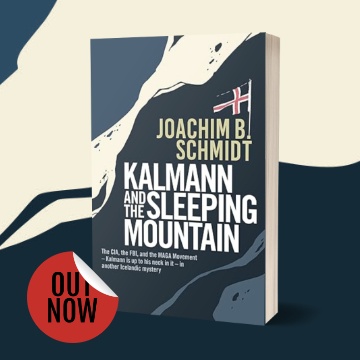
Travel back in time to the Golden Age of Murder this Christmas with Joan Coggin’s fiendishly humorous Who Killed the Curate? Originally published in 1944 and set in 1937, it introduces the scatterbrained and remarkably good-natured Lady Lupin Lorimer Hastings, an unlikely amateur sleuth who goes on to solve a series of four complex conundrums, whether she really intends to or not.
Lady Lupin makes her detective debut at an opulent 21st birthday party for some relative or other that is being held at the Savoy. She and close chums Duds and Tommy Lethbridge find it all a bit taxing and are planning to slope off to a nightclub ASAP. However, their exit is quickly put on hold when Lady Lupin finds herself sitting next to the charming Andrew Hasting, a rather un-vicar-like vicar, at dinner.
In the most shocking society event of recent years, 22-year-old Lady Lupin and 43-year-old Andrew fall in love and quickly marry. Post-honeymoon, the pair settle in Andrew’s parish of St Marks in Glanville, Sussex. Lady Lupin throws herself into the role of vicar’s wife, hobnobbing with Glanville’s limited luminaries, visiting the Sunday school, attending meetings of the Girl Guides, and dodging insinuations from the Mothers’ Union, all while little knowing what is going on around her.
Amongst many moments of befuddlement, she does manage to make a few proper friends in the village, including acerbic novelist Diana Lloyd. Thus, when Charles Young, the overly pious and rather off-putting curate of St Marks, is murdered on Christmas Eve and Diana is suspected of the crime, Lady Lupin determines to assist the local police in bringing the real culprit to justice.
When viewed from the present day, Who Killed the Curate? is something of a mashup of Agatha Christie’s Tommy and Tuppence Beresford books and PG Wodehouse’s Bertie Wooster stories. That is, it centres on bright young things talking quickly and at cross-purposes with each other, appearing rather vacuous and expressing weariness with the world but ultimately being jolly good eggs (and having a surprisingly keen eye for crime).
Still, that wouldn’t have been the case when the novel was first published in 1944, when Coggin’s decision to make her series sleuth an affable high-society young lady, who has been largely cushioned from the real world by the bubble of privilege in which she has grown up, would have been far more innovative. As would the fact that she is somewhat ably assisted in her investigation by the glamorous Lethbridges and dashing new nephew-in-law/secret service agent Jack Scott.
While Lady Lupin no doubt matures as a sleuth as the series progresses – and hopefully significantly improves her listening skills – she is likeable and entertaining from the outset. Her fish-out-of-water attempts to blend into village life and be the best vicar’s wife she can possibly be are both very earnest and very funny. The resigned way in which she accepts the many intrusions into the vicarage and the miscommunications with the head of the Mothers’ Union are particularly amusing.
Of course, Lady Lupin’s character being largely dependent on her lack of both situational- and self-awareness can sometimes be a bit infuriating. There are a couple of occasions when people reveal significant information to her and she barely comprehends or acknowledges it. Paying a bit more attention would probably have allowed her to have the crime up wrapped up by Boxing Day. Saying that, Coggin manages to strike a good balance between Lady Lupin’s annoying and endearing traits, meaning that she remains engaging even at her worst.
Moreover, in setting the novel in 1937 and juxtaposing glamorous London life with the outwardly more sedate life in the country, including all the peculiar issues of manners and class, Coggin captures a vanishing way of life. Pretty much everything she describes – and everything the characters are accustomed to and hold dear – will change in the aftermath of World War II. As such, Who Killed the Curate? offers a fascinating glimpse into the past that both gently mocks and quietly celebrates how things used to be.
Coggin’s decision to dedicate a significant amount of the novel to social foibles and Lady Lupin’s comedy-of-errors approach to her new life does mean that the murder mystery can sometimes feel a bit pushed to the side. However, the whodunnit and whydunnit aspects are actually very cleverly thought out, particularly when viewed in the way they would have been in 1937. Plus, as her haphazard investigation progresses, Lady Lupin’s development as a reluctant amateur sleuth feels authentic.
By balancing the seriousness of the murder investigation with many moments of levity and absurdity, Coggin showcases her mastery of crime fiction. Her skill with dialogue, particularly witty one-liners, and construction of rich backstories elevate characters that might otherwise seem rather inane. Who Killed the Curate? offers a great blend of humour, mystery and social commentary, and it marks a promising start to Lady Lupin’s detective career.
For more Golden Age mysteries, try Twice Around the Clock by Billie Houston and Death of a Bookseller by Bernard J Farmer.
Galileo Publishers
Print/Kindle
£3.99
CFL Rating: 4 Stars










